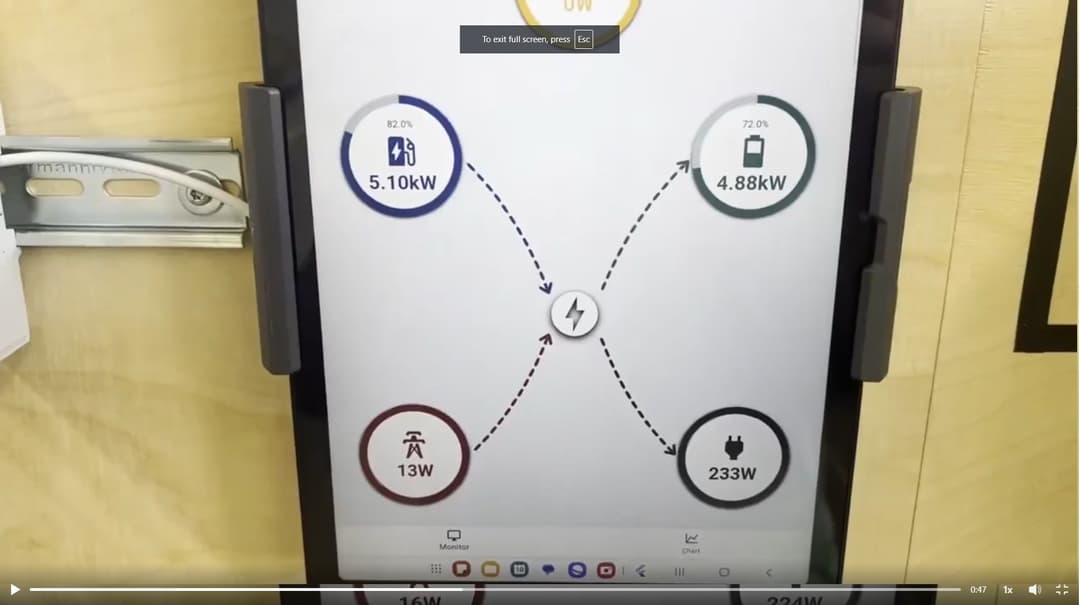
Bidirectional EV Charging startup Ambibox GmbH has successfully trialled V2H (Vehicle to Home) with the Tesla Model Y without any additional modifications. The demonstration was shared on a LinkedIn video on Wednesday. It has long been speculated whether Tesla EV's were capable of bidirectional charging, this demonstration proves it is possible.
The setup comprised a 2024 Tesla Model Y paired with a stationary battery that works like a Tesla Powerwall 2. The Model Y is charged from the stationary battery and also discharges energy back into it.
This use case extends the stationary battery's capacity with the additional capacity of the vehicle battery. For example a 10 kWh stationary battery could it extend its total capacity to 70 kWh with a Tesla Model Y RWD (60 kWh battery).
Ambibox CEO, Manfred Przybilla, noted that the "use case that is frequently requested in the USA as a backup power supply. Together with the vehicle battery, it can also be used to bridge several days without power."
| Vehicle to Load, VtoL or V2L | V2L is the most basic application of bidirectional charging. It does not require a bidirectional charger. Instead, a V2L adapter is plugged into your type 2 charging port which allows the car to operate as a portable battery pack with a standard 120/240V power supply. |
| Vehicle to Home, VtoH or V2H | V2H involves using energy from your EV to power your home or business. This works in the same way a stationary home storage battery (like the Tesla Powerwall 2) does in reducing grid consumption, except your car needs to be plugged into a bidirectional charge point. |
| Vehicle to Grid, VtoG or V2G | V2G involves using energy from your EV to stabilise the grid. This is done through a ‘smart’ bidirectional charger, which is typically part of a VPP (Virtual Power Plant). Subject to defined parameters, your energy retailer will control when your battery is charged or discharged. |
▶️MORE: Watt is Bidirectional Charging, V2G, V2H, V2L?

Although this is an development for Tesla owners, it should be considered cautiously. Tesla has not formally confirmed whether V2G or V2H is capable with its electric vehicles.
▶️MORE: Which Electric Cars Have Bidirectional Charging (V2L, V2H, V2G)
Is Bidirectional Charging Available in Australia?
Vehicle-to-load (V2L) is currently available in several of the latest models.
With regards to V2H and V2G, South Australia become the first jurisdiction in Australia to permit the connection of bidirectional chargers in its network. The only bidirectional charger approved to be used in bidirectional mode is the Wallbox Quasar which needs to be connected to a Nissan Leaf to activate the bidirectional charging feature. As of the time of writing, no other states in Australia have permitted the connection of bidirectional chargers in its network.
It should be noted that the Wallbox Quasar needs to be connected to a Nissan Leaf which uses the CHAdeMO plug which will not feature in any new electric cars going forward in Australia.
In Australia, the dominant charging plug is CCS, which is yet to feature an EV with V2H or V2G. CharIN e.V, the body in charge of driving commercialisation of V2G/V2H for the CCS standard, has set a roadmap for commercial availability by 2025. This means we are at least twelve to eighteen months away from commercial availability of V2G and V2H in everyday commercial and household settings.
About the author
Stay up to date with the latest EV news
- Get the latest news and update
- New EV model releases
- Get money savings-deal

